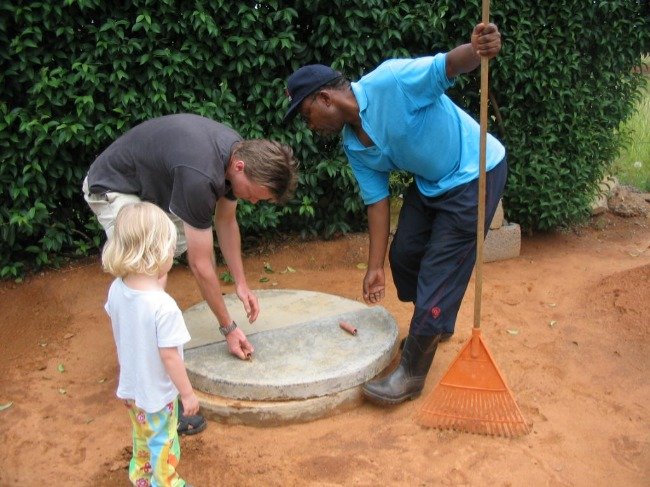The use of small scale biogas plants for home cooking fuel is gaining more followers in the developed nations all the time. These small Anaerobic Digestion Plants (or “biogas digesters”) are great for home cooking using the waste food (table scraps) every day from a young family can fuel a gas ring to heat up a meal every day for 15 to 20 minutes. After that, the gas pressure will drop off, and you will need to wait until the next day for it to replenish. But, that is enough to cook vegetables, and more than enough to warm up some soup, or boil water for other uses – not least for several cups of coffee or of tea!
Benefits of Running a Small Scale Biogas Plant
Not only will you significantly reduce your energy bill for cooking, but you reduce the burden on your community by recycling your waste food. This is significant because if waste food is land-filled it adds hugely to the burden of that landfill on the environment. That's because it is the organic waste in any landfill which produces methane gas (landfill gas) which escapes from all landfills (even those that collect as much of the gas as possible, and make use of it). When methane escapes from landfills it adds to the greenhouse effect, which in turn is causing global warming. Waste food is a substantial proportion of the organic content in most landfills.
By using biogas from your small scale biogas plant you are also reducing your demand for electricity and natural gas. Since these are still sourced in most communities from fossil fuels, which contribute to climate change you will again be acting sustainably toward the next generation.
Simple Low-Cost Biogas Digester Designs
Low-cost small scale biogas digester designs are producing remarkably successful results. They can be bought, or a competent DIYer can use one of the many freely available designs for small scale biogas plants, available from websites and on YouTube.
An example of a small scale biogas plant is the HomeBiogas system which we have described in a previous article.
The following YouTube video focus on practical demonstrations of the successful use of a small and simple biogas digester design at a family scale. Turn your sound up, watch the video below, and see what you think of this new renewable energy source.

We have been pleasantly surprised and delighted to see how the popularity is rising for these back-yard style systems, which can be implemented by the average handyman/person, at very little initial set-up cost.
More Information About Small Scale Biogas Plants
A small-scale biogas reactor or anaerobic digester is an anaerobic treatment technology that produces (a) a digested slurry (digestate) that can be used as a fertilizer and (b) biogas that can be used for energy. Biogas is a mix of methane, carbon dioxide and other trace gases which can be converted to heat, electricity or light. Small-scale biogas reactors are typically designed to produce biogas at the household or community level in rural areas. The airtight reactors are filled with animal manure from the farm.
What is A Biogas Reactor?

A biogas reactor is an airtight chamber that facilitates the anaerobic degradation of blackwater, sludge, and/or biodegradable waste (e.g. It also facilitates the collection of the biogas, a mixture of methane (CH4) and carbon dioxide (CO2) produced in the fermentation processes in the reactor. The gas forms in the slurry and collects at the top of the chamber, mixing the slurry as it rises. The pressure exerted by the rising gas can be used to transport the gas to the collection vessel or directly to where it is going to be used.
The digestate is rich in organics and nutrients, almost odourless and pathogens are partly inactivated.
The benefits of small-scale biogas plants at household or community level
Biogas reactors are often installed at household or community level in rural areas for the co-digestion of animal manure and toilet products.
Small Scale Uses for Biogas
The produced gas can be recovered and used either directly for cooking and lighting or it can be transformed into heat in a gas heating system or into combined heat and power (CHP) in a cogeneration unit. The digestate (nutrient-rich sludge) can be used as a fertilising soil amendment in agriculture.
Animal manure and kitchen waste contain a lot of organic matter and generally, the process produces enough biogas for the family to cover at least cooking requirements. Humans produce less excreta, which contains less material that can be converted to biogas than animal dung. However, toilets, if available can directly be linked to the biogas plant where human faeces are digested together with the other wastes. This option provides safe treatment of human excreta and thus improves the hygienic situation of the family.
Starting Up the Anaerobic Digestion Process
When the reactors first are installed, it may take some time until the specific biogas producing bacterial community has developed. It can help to seed the reactor with anaerobic sludge from a septic tank or another anaerobic digester.
The hydraulic retention time (HRT) in the reactor should be at least 15 days in hot climates and 25 days in temperate climates. For highly pathogenic inputs, an HRT of 60 days should be considered. Normally, biogas reactors are operated in the mesophilic temperature range of 30 to 38°C. A thermophilic temperature of 50 to 57°C would ensure the destruction of the pathogens, but can only be achieved by heating the reactor (although in practice, this is only found in industrialized countries). via sswm.info
Why Make Biogas?
To conserve finite fossil fuels and to simultaneously reduce greenhouse gas emissions and mitigation of global warming a gradual switch within renewable energy sources is a necessary task in the next decades. Here bioenergy plays a central role – also for agriculture branch.
Bioenergy is a largely CO2-neutral energy source and it is permanently renewable, as it is produced out of biomass, which is actually living storage of solar energy through photosynthesis. via www.bioenergyfarm.eu
Small Scale Biogas Plant Design Pdf
The How to Build a Biogas Plant website has a number of papers (pdfs) that can be downloaded for small scale biogas design, suited to domestic applications. Refer to the Design page to download designs for other larger or community systems. For example, they have the Mega Biogas Plant Design Compilation. The document is quite large and is a compilation of various scale biogas designs suited to household situations. via www.build-a-biogas-plant.com
The Home Biogas Plant Experience
Our family installed biogas (8 cubic metre) in 1992. This plant has been producing cooking gas enough for a family of six during these last 22 years. In 2009, the plant was thoroughly cleaned and the dome repainted from the inside to make it air-tight. We will not be surprised if this plant lasts another 20+ years.
Initially, we had one buffalo, and then over time, the number of cattle varied between 1-3. We have also connected human toilet directly into the plant from the very beginning. I think if there is any Gaia machine on earth, this plant is the one–completely recycles ‘wastes’, produces fuel for cooking. The amount of fuel varies depending on the length of the day and surface temperature, with reduced fuel during a few winter months in Nepal’s plains (elevation less than 400 msl).
Chinese have been experimenting with different small scale biogas Plants made with materials such as fiber-glass pre-fab models, but the ones in Nepal are constructed with some cement, concrete, bricks and a few metal pipes for transporting gas.
Biogas is an amazing technology. We built our own in 1992 June. After 18 years, we got it dredged, and it is back to full operation and we hope the dome lasts for at least another twenty years. We use cattle poop and have our toilet connected to the digester (as shown in the picture)–so no separate structure, the slurry is excellent fertilizer. via www.naturalbuildingblog.com
How Much Energy is there in Biogas?
Biogas production is usually measured or estimated in cubic metres over a period of time, but it should be converted and reported in energy units.
The main calculations are to convert biogas production into methane production and then convert that into energy production (in MJ). The methane content of biogas should be about 65% and 1 m3 of methane contains 34 MJ of energy, so 1 m3 of biogas should contain about 22 MJ of energy. via irena.org
What is the Future of Small-Scale Anaerobic Digestion?
Although anaerobic digestion of small amounts of organic waste was considered unprofitable a few years ago, it is growing today with a new model of biogas production: small-scale digestion (or micro-scale digestion). By the end of 2016, 130 micro-scale digestion facilities were in operation in Europe. Smaller, less expensive, easily self-sufficient, these production units attract farmers, but also investors in eco-neighborhoods, wishing to develop new sources of clean energy.
There are over 20,000 full-scale AD systems in the world and over 1,000 new projects per year. However, the valorization process for organic waste can still be optimized. One way to do so is to use small-scale digestion. via www.biogasworld.com






In 2009 June built our own but our father died. We now learning how to make this bio gas now ourselves. We use cattle dunga. Can we have our toilet connected to this digester The slurry will be fertilizer. Any help would be thankfully given, Sir!
Good post. In general, I think the notion is fantastic, provided that you know what you’re doing. I’ve read in publications that it’s critical to be familiar with safety protocols because these gases are poisonous and some individuals have accidently damaged themselves because they didn’t fully comprehend the risks.